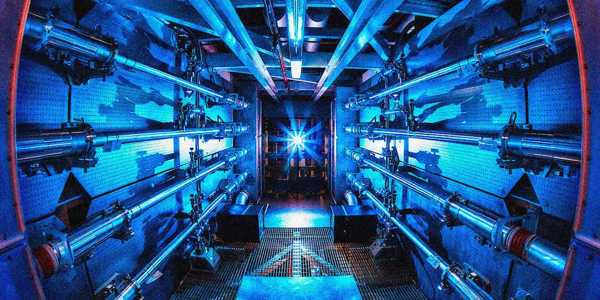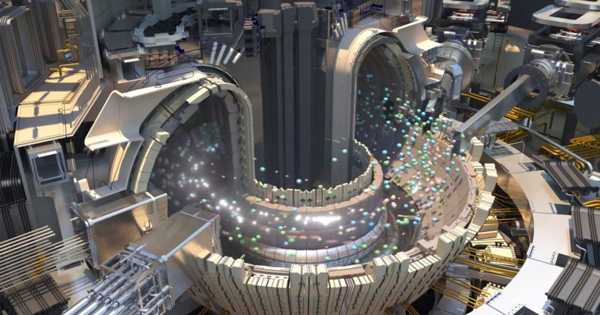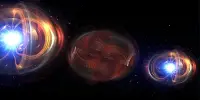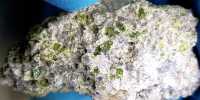In recent decades, there has been a never-ending search for sustainable energy sources. Nuclear fusion is one source of energy that scientists have yet to discover. This is clean energy’s Holy Grail. This reaction has been replicated by generations of physicists.
Researchers at the National Ignition Facility (NIF) in California used a powerful laser to heat a peppercorn-sized sample of two hydrogen isotopes well past the temperature of the Sun’s core, a process known as inertial confinement fusion (ICF). ICF is one of two major branches of fusion energy research, the other being “magnetic confinement fusion,” which has seen recent breakthroughs of its own.
According to the BBC, scientists were able to harvest 70% of the energy — approximately 1.35 kilojoules — used by the powerful laser to start the fusion reaction inside the reactor during an experiment earlier this month at the NIF.
Scientists in the United States claim to have recreated the Sun’s power for a fraction of a second. To elicit a reaction, powerful lasers blasted a tiny target. The burst only lasted 100 trillionths of a second, but it produced 10 quadrillion watts of power. One followed by sixteen zeros equals ten quadrillions. The power created by scientists is equivalent to 6% of all solar energy hitting the Earth’s surface at any given time.
Scientists are on the brink of breaking the power of fusion. They managed to heat up a peppercorn-sized sample of two hydrogen isotopes well past the temperature of the Sun’s core, a process known as inertial confinement fusion (ICF).
While this may not appear to be much, it represents a significant advancement in the field. “This is a huge advance for fusion and the entire fusion community,” said Debbie Callahan, a physicist at the Lawrence Livermore National Laboratory, where the NIF is housed.
In other words, we are gradually approaching the point where we will be able to truly “achieve nuclear fusion,” or generate a net-positive amount of energy — the industry’s holy grail that has yet to be attained despite nearly a century of research. The promise remains as enticing as it has always been: an infinite supply of carbon-neutral energy without the risk of a nuclear meltdown.
The NIF scientists are particularly excited about their recent experiment because the fusion reaction is becoming hot enough to cause more fusion reactions, a process known as ignition. “Self-sustaining burn is critical to achieving high yield,” Callahan told the broadcaster. “The burn wave must propagate into the high-density fuel in order to extract a large amount of fusion energy.”

It was a watershed moment for the team. “Demonstration of ignition has been a major scientific grand challenge since the idea was first published almost 50 years ago,” said Jeremy Chittenden, co-director of Imperial College London’s Centre for Inertial Fusion Studies, which is assisting with data analysis. “It was the primary reason for NIF’s construction and has been its primary goal for more than a decade.”
“The NIF team has done an extraordinary job,” said Steven Rose, director of Imperial’s Center for Inertial Fusion Studies. “This represents the most significant advancement in inertial fusion since its inception in 1972.”
The study could also have far-reaching implications in the field of physics. “The NIF lasers already created the most extreme conditions on Earth, but the new experiment appears to have doubled the previous temperature achieved,” said Brian Appelbe, Research Associate at Imperial College’s Centre for Inertial Fusion Studies, in a statement. “We have entered a regime that we have never experienced before – this is uncharted territory in our understanding of plasma.”
However, it is too soon to pop the champagne corks. According to Callahan, the team is still going through the data with a fine-tooth comb to ensure “that we understand the result.” Despite the high praise, the scale of the NIF experiment leaves something to be desired. According to Chittenden, it only produced about the “equivalent to the energy required to boil a kettle.”
Its scale could be a long way off. However, any kind of breakthrough in this field, one that has long vexed some of the world’s greatest working scientists, and where the stakes could not be higher, is nothing short of astounding on its own.
These discoveries are part of a global effort to understand the science behind the production of fusion reactions on Earth. Fusion reactions combine light elements in the form of plasma – the hot, charged state of matter made up of free electrons and atomic nuclei that makes up 99 percent of the visible universe – to generate massive amounts of energy that could provide a virtually limitless supply of power to generate electricity for humanity.















